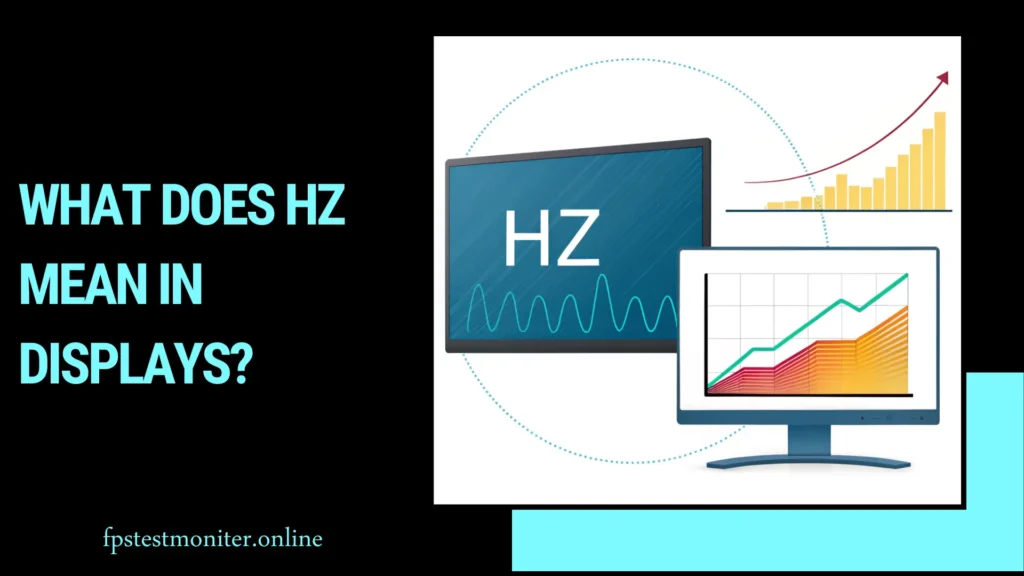
When shopping for a new monitor or gaming setup, one question comes up again and again: how many Hz can the human eye actually see? Some people say the eye can’t see more than 30 frames per second. Others insist they can feel the difference between 144Hz and 240Hz monitors.
The truth lies somewhere in between. Human vision is not limited to a single number like 30 or 60Hz. Instead, it depends on how our eyes and brain process motion, and how sensitive we are to subtle changes. In this guide, we’ll break down the science of refresh rates, clear up myths, and explain what really matters for everyday use and competitive gaming.
What Does Hz Mean In Displays?

Before we can understand how our eyes interact with Hz, it helps to define the term. In displays, Hz stands for hertz, a measure of frequency. A screen’s refresh rate tells us how many times it updates the image every second.
- A 60Hz monitor refreshes the image 60 times per second.
- A 120Hz monitor refreshes 120 times per second.
- High-end monitors can reach 144Hz, 240Hz, or even higher.
It’s also important to separate refresh rate (Hz) from frames per second (FPS). FPS depends on your graphics card and how many frames it can render, while Hz is limited by your monitor’s capability. For the smoothest experience, your FPS should match or exceed your monitor’s Hz.
How The Human Eye Perceives Motion
Unlike a camera, the human eye doesn’t capture individual frames. Instead, it continuously processes light, color, and movement, and our brain interprets that as fluid motion.
A key concept here is persistence of vision—our brain holds onto an image for a fraction of a second after it disappears. This is why movies at 24fps can still appear smooth, even though the actual frame rate is low compared to modern games.
Another factor is flicker perception. Some people are more sensitive to flicker or motion blur. That’s why certain individuals instantly notice the jump from 60Hz to 120Hz, while others barely see a difference.
The Myth Of “The Human Eye Can Only See 30fps”
You’ve probably heard this statement: “The human eye can’t see more than 30fps.” This is one of the most common myths in tech discussions.
The myth likely started because early films were shot at 24fps and still looked smooth enough for audiences. However, smoothness doesn’t mean we can’t detect differences.
In reality, scientific research shows that humans can perceive changes far above 30fps—sometimes even past 200Hz—especially in fast-moving or high-contrast situations.
Can Humans See Beyond 60Hz, 120Hz, or 240Hz?
So, where is the limit? The answer is not absolute.
- 60Hz vs 120Hz: Most people notice a clear improvement. Motion feels smoother, input feels quicker, and eyestrain is reduced.
- 120Hz vs 144Hz: The difference is smaller but still noticeable for sensitive players, especially in fast games.
- 144Hz vs 240Hz: At this level, only competitive gamers or people with keen sensitivity see a big difference, but it still improves reaction time and tracking in esports.
Studies suggest that while the average person may not consciously “see” 240Hz, their brain and reflexes respond to the smoother signal. That’s why pro gamers often prefer ultra-high-refresh monitors.
Why Refresh Rate Matters For Gamers
For gaming, refresh rate isn’t just about looks—it’s about performance. Higher Hz monitors reduce input lag and provide more frames for your brain to process, giving you quicker reactions.
- Casual play: A 60Hz or 120Hz monitor feels fine for story-driven or slower-paced games.
- Competitive gaming: 144Hz has become the standard because it gives a clear edge in shooters and esports.
- Professional esports: 240Hz+ offers the smoothest tracking and lowest latency, which can make a split-second difference.
The faster your screen refreshes, the more information you see, and the faster you can respond. For gamers, that can be the difference between winning and losing.
Practical Advice For Choosing The Right Monitor
Not everyone needs the highest refresh rate available. The right choice depends on your usage, hardware, and budget.
- General use & casual gaming: 60Hz to 120Hz is enough. Browsing, watching movies, and light gaming don’t benefit much from higher Hz.
- Enthusiastic gamers: 144Hz monitors strike the best balance between performance and price.
- Esports and pros: If you play competitively and have a powerful PC, 240Hz can provide an advantage, though it requires strong hardware to reach those frame rates.
Keep in mind: higher Hz only matters if your graphics card can consistently push enough FPS to match it. A 240Hz monitor won’t feel smooth if your system can only handle 90fps.
Frame Rate vs Refresh Rate
Understand the difference and why both matter for smooth visuals.
How Much Does the CPU Affect the FPS?
Explore how CPU performance can influence gaming frame rates.
Is FreeSync Worth It?
A guide on FreeSync technology and whether it’s worth it for your setup.
How to Make Fortnite Faster on PC
Practical tips to boost FPS and smooth gameplay on your computer.
Best Refresh Rate for Gaming
Learn what refresh rate works best for competitive and casual gaming.
🔹 Wrapping Up: What the Human Eye Really Sees
The human eye doesn’t see “Hz” in the way a monitor measures it, but we do notice the effects of higher refresh rates: smoother motion, reduced blur, and quicker reactions.
While the myth of being limited to 30fps is outdated, there’s no single number that defines human vision. Most people clearly benefit up to 144Hz, and sensitive users or competitive gamers notice improvements at 240Hz and beyond.
If your goal is smoother gameplay or better performance, choosing a higher-refresh monitor is worth it—just make sure your hardware can keep up. For everyday users, balance refresh rate with cost and practicality.
In the end, the “limit” of human vision isn’t just a number. It’s about how we perceive motion, how our brains process speed, and what feels smoothest to us.
Common Questions About Human Eye Hz
Q1? Can humans see 240Hz?
Not directly, but many people notice smoother tracking and lower input lag on a 240Hz monitor. Your brain benefits even if your eyes can’t label the difference.
Q2? Do higher Hz always mean better?
Not always. Above 144Hz, the improvements are smaller, and casual users may not notice.
Q3? Is 144Hz enough for competitive gaming?
Yes. For most players, 144Hz is the sweet spot, offering a big improvement over 60Hz without the high cost of 240Hz monitors.
Q4? What’s the difference between FPS and Hz?
FPS is how many frames your PC produces. Hz is how many times your monitor refreshes. Both need to align for smooth gameplay.
